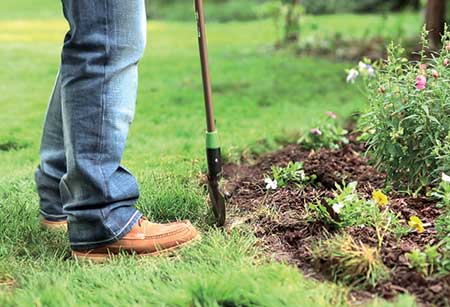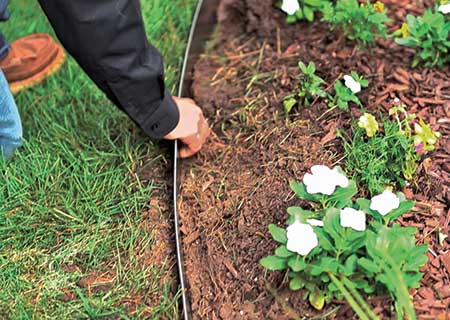Landscape edging is an overlooked feature of a landscape project, says Joe Raboine, director of residential hardscapes for Belgard.
“A well-designed landscape can incorporate different types of edging to not only enhance the space but also to help reduce maintenance,” he says.
To help with installations, Landscape Management talked to Raboine, Mike DePriest, owner of Longs Peak Landscape in Longmont, Colo.; Marcus Langlee, national sales manager for Coyote Landscape Products; and Brad Yount, vice president of sales and marketing for DeWitt Co.

Do:
- “Focus on edgings that require no digging. That allows landscape crews to install the edging much quicker.” –BY
- “Secure landscape edging using stakes.” –ML
- “Make sure the designers drew a functional space. Don’t create bad spaces to maintain.” –MD
- Entertain a variety of edging options, like flush paver edging. “Flush paver edging allows for a virtually permanent and maintenance-free option, which makes it easy to run a mower right over the top.” –JR
- “Use edging with a rolled or rounded edge for the safety of kids, pets and equipment.” –ML
- “Consider: Is it set at the right grade? Is it mower friendly? Is it going to be able to retain the material within the bed?” –MD
- “Use perforated edging to encourage water flow.” –ML
- “Check to make sure you know the irrigation design. Is the edging going to be right up against sprinkler heads? Create adequate space so the risers don’t get hung up if edging moves over time.” –MD
- “Look for a painted or powder-coated material for a longer life span.” –MD
- “Consider products like raised curbing as it provides a visual accent and helps reduce ongoing maintenance.” –JR
- “Remember, only a small portion of lawn edging (less than 2 inches) is shown above ground to properly separate the landscaping area.” –ML
- “Be cautious in clay soils, as winter freeze can push the edging up every winter.” –MD

Don’t:
- “Don’t install straight steel edging as it can hurt kids, dogs or equipment.” –MD
- “Don’t install stakes through irrigation lines.” –MD
- “Don’t install in an area that will trap water that needs to drain through.” –MD


